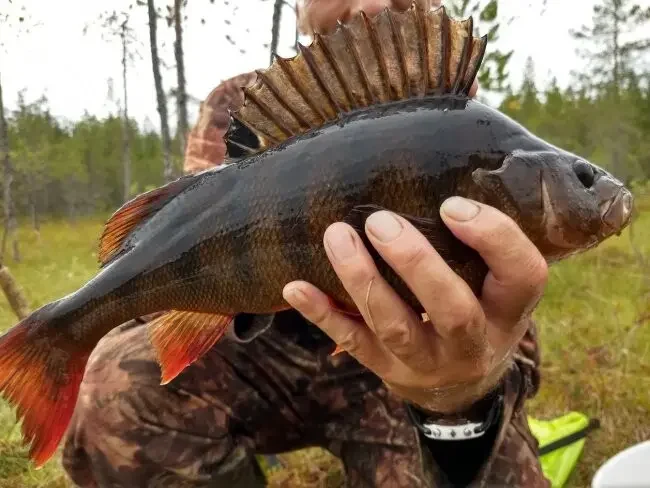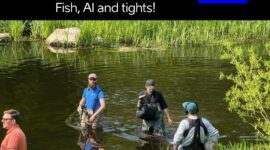The scientists at the Estonian University of Life Sciences (EULS), together with researchers from Sweden and Finland, sequenced the genomes of over 30 Eurasian perch to better understand the molecular mechanisms of adaptation to extreme dark and acidic environments. The study revealed that living in dark lakes has caused changes in hundreds of genes, particularly in the areas involved with gene regulation.
Perch is one of the few species that is able to reproduce in dark acidic lakes in bogs and forests where other fish species don’t survive. “Genome sequencing allows us to discover the parts of the chromosomes that are affected by natural selection and identify genes that make perch the dominant species in dark acidic waters,” says Anti Vasemägi, a senior researcher of the Chair of Aquaculture at EULS and professor at the Swedish University of Agricultural Sciences, who led the study.
It is a globally unique study describing over 800,000 single nucleotide polymorphisms among perch in the lakes of Estonia, Finland, Sweden and Lithuania. Kristina Noreikiene, a researcher of the Chair of Aquaculture at EULS and one of the authors, emphasises that the development of sequencing technologies has made it possible to look through tens of thousands of genes and efficiently find those specific gene variants that have increased in frequency due to natural selection.
“We detected hundreds of genome regions that consist signs of natural selection,” Noreikiene says. Those signs were most prevalent in the regulatory regions of genes, indicating their importance in evolution. According to Noreikiene, the significance of regulatory sequences in evolution was predicted more than 45 years ago, based on high similarity in human and chimpanzee proteins.
Professor Riho Gross, the Head of the Chair of Aquaculture and one of the participants, adds that in dystrophic (or humic) lakes, light barely reaches a few metres deep. In these lakes, light with a shorter wavelength cannot penetrate the deeper layers.
“Surprisingly, we didn’t find strong signs of natural selection in genes that encode processes related to the absorption and processing of light signals,” Gross says. “In the case of opsins, light-sensitive proteins in the retina, we couldn’t find evidence that would suggest they had a special role in adapting to a specific visual environment.”
In addition to the visual environment, the humic substances in dark water lakes also reduce the pH, accessibility of minerals and change many other chemical and physical qualities of water. “Therefore, it did not come as a big surprise that patterns of natural selection were prevalent in genes that are important in the transportation of calcium, potassium, sodium and other ions, as well as for the regulation of pH levels,” Gross says.
Gross mentions that a few years ago, a whole lake experiment was conducted to estimate the impact of perch on the methane cycle of humic lakes. The study revealed that due to changes in the food chain, perch can reduce the amount of methane released from a lake into the atmosphere up to ten-fold.
As methane is much more powerful greenhouse gas than carbon dioxide, perch may have a significant role in climate change. “This is why it is important to understand the molecular mechanisms of adaptation in darkwater lakes, where perch is often the only fish species. “This study showed us that adaption to extreme but presumably simple environments is a multifaceted and complex process,” he says.
Vasemägi concluded that several follow-up studies are currently ongoing: to better understand the functioning of gene variants under natural selection as well as their role in the perch’s adaption.
He added that even though perch is one of the most common species of fish in Estonia, scientific work solving the puzzle of a billion nucleotides continues.
The study “Whole-genome sequencing illuminates multifaceted targets of selection to humic substances in Eurasian perch” was published in the journal Molecular Ecology.
The translation of this article from Estonian Public Broadcasting science news portal Novaator was funded by the European Regional Development Fund through Estonian Research Council.
 Back
Back



